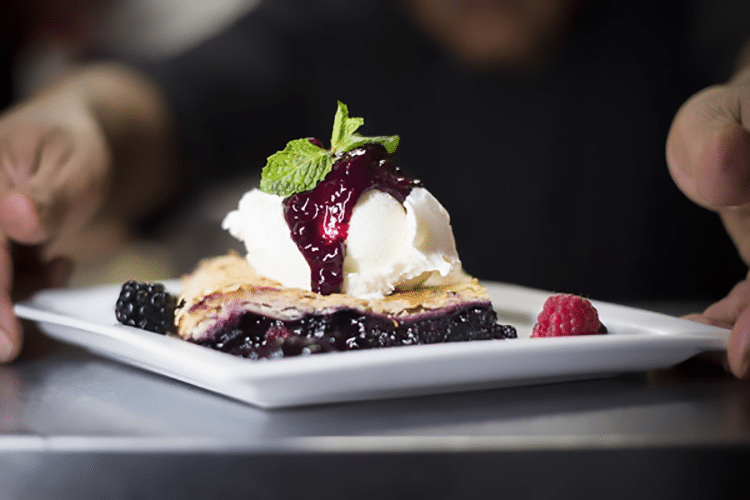From the TS Editors: The following guest post comes from our friend and partner in travel Kim Gray of toqueandcanoe.com — an award-winning online mag/blog about Canadian travel culture.
It’s Friday night in Vancouver, the last weekend of the city’s popular Dine Out Festival, and my mother and I have managed to nab a table at downtown Vancouver’s popular Salmon n’ Bannock bistro. My mom, who was raised on Canada’s northwest coast, is right at home. She has a deep affection for First Nations art and the bistro is a showcase for it. We’ve never visited before but we’re welcomed like old friends, as are other patrons, and we feast on the likes of tender elk medallions with elderberry sauce and a seafood medley accompanied by mouth-watering, spruce-flavored wild rice.
This is my most recent experience with aboriginal cuisine in Canada. Two other meals stand out. The first was during a visit to Haida Gwaii where Chef Roberta Olsen laid out an unforgettable spread for her international guests – octopus, seaweed, herring roe, kelp and sea asparagus. The other was served at an event at Calgary’s Hotel Arts, where Top Chef Canada finalist Rich Francis, a Gwich’in chef from the Northwest Territories, cooked up a plate that included melt-in-your-mouth salmon smoked with white sage and cedar berries. Given his high profile on the television show, Francis has arguably helped catapult the notion of modern indigenous fare into the mainstream.
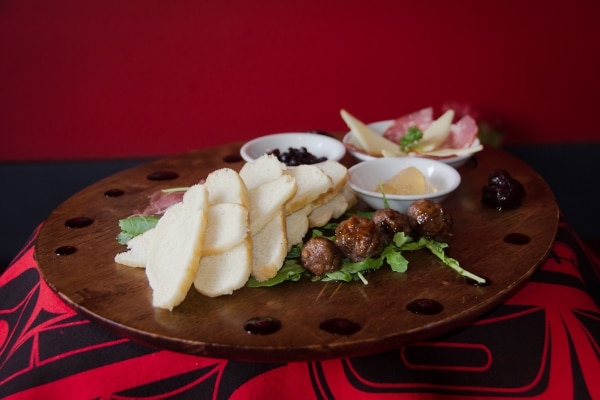
But there are indications everywhere that aboriginal culinary innovators are hitting their stride in kitchens countrywide. “Now is the perfect time and place for us to get this out there,” says Francis during a telephone interview; he was on a road trip to Edmonton, Alberta when we spoke, but currently calls Ontario’s Six Nations Reserve home.
“We’re not just talking one demographic. We’re talking from Indian country to every day foodies. Everyone’s interested. There are so many culinary influences you can pull from on Turtle Island,” he continues, referencing the name many aboriginals give to North America. “Influences from Navajo to Mi’kmaq. Personally, I’m really interested in the diet of the Haudenosaunee people. They were primarily vegetarian—eating corn, beans and squash – the three sisters.”
Francis, who plans to open a restaurant called District Red, likely in the Toronto area, says First Nations everywhere are “decolonizing – it’s happening in the arts and in the fashion industry. Tanya Tagaq is doing it with music and chefs are doing it with food. We’re banding together and exploding boundaries. It’s a pretty cool time.”
Shane Chartrand, who works at River Cree Resort & Casino’s Sage in Edmonton, agrees it’s an exciting time to be an aboriginal chef in Canada. Chartrand—a Cree chef with Metis influences who just competed in Chopped Canada and who will be part of an upcoming culinary event in the world’s largest teepee—is currently working on what he calls a “progressive indigenous cookbook.”
“Ten years ago, we couldn’t talk about aboriginal cuisine. People would laugh. Now they’re excited. We’re on the edge of something huge,” says Chartrand. “I had a request recently to feed the famous Italian chef Alessandro Porcelli when he was visiting Canada. We took him out to the country, sat in the dirt around an open fire with no knives or forks and fed him rabbit legs, bison short ribs, bannock and deer osso buco. He loved it.”
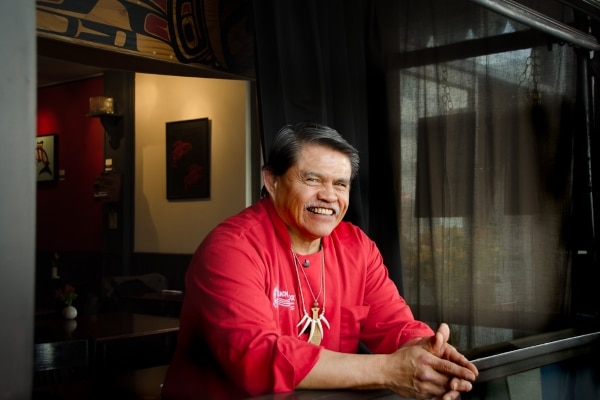
Ben Genaille, a Cree from Manitoba who works at Spirit Ridge Vineyard Resort & Spa in Osoyoos, British Columbia, says the aboriginal world in Canada has centered on survival, as opposed to the evolution of its culture. “Now, we are dusting off our culture, evolving it, and sharing it with each other and the world,” says Genaille, who has headed up the aboriginal team at the Culinary Olympics twice in Germany and who hopes to return in 2016.
“When I teach young First Nations people about aboriginal food, at first they always think it’s so boring. But then I tell them to consider the earth, the land, the water and the sky. We’re talking potatoes, flowers, berries, yellow carrots, Jerusalem artichokes, scallops, oysters, rabbit, venison, deer, moose, ducks and pheasants. These are all aboriginal ingredients. And these are just a few. When they hear this, you can see the excitement on their faces.”
Back at Salmon n’ Bannock, sous chef Ryan Lalonde works closely with head chef Stacey Jones. Jones is a classically trained chef who hails from Vancouver Island’s Nuu-chah-nulth community. Lalonde—who was raised in foster care and is, he says, “native by grace”—likes to put a contemporary twist on Salmon n’ Bannock’s traditional fare. Lalonde says he hopes that what’s happening in aboriginal culinary circles eventually transcends race.
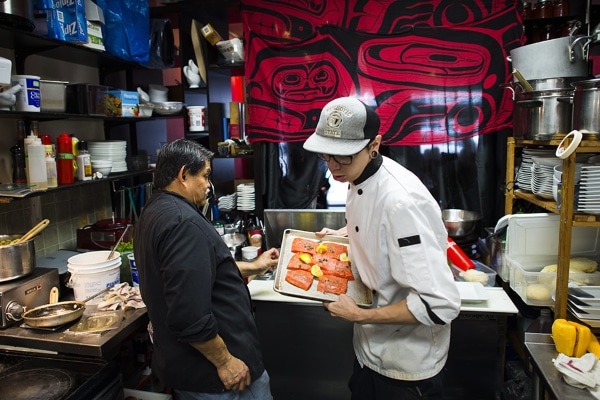
“We’re all people of this earth. This is what we’re supposed to be doing. Head-to-tail cooking, not being wasteful and being connected with the ingredients we’re using,” says Lalonde thoughtfully. “Good, healthy food is a human right.”
Inez Cook, who co-owns Vancouver’s Salmon n’ Bannock Bistro with business partner Remi Caudron, recently made contact with her biological relatives in the Nuxalk community of Bella Coola, B.C. She insists that, in the end, her restaurant is really all about community. “All our employees are First Nations. We each have our own stories and people visiting the restaurant are interested in hearing them,” says Cook—who just celebrated the bistro’s fifth anniversary. “And, we take great pride in serving delicious aboriginal comfort food with a modern take.”
My mom and I wrap up our meal at Salmon n’ Bannock with hot caramel lava cake served with maple whipped cream. We practically hug the staff goodbye as we leave. Of course, when we hear later that this cozy, unpretentious bistro in downtown Vancouver has won the city’s Dine Out Festival award for “Best Dining Experience” we’re hardly surprised.
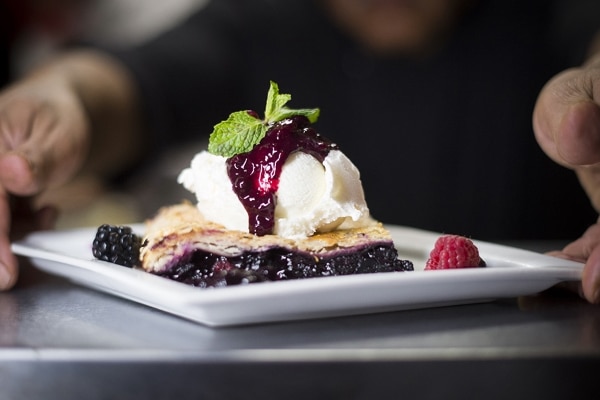
*For more info on aboriginal tourism in British Columbia, Canada, check out Aboriginal Tourism BC at https://www.aboriginalbc.com/
[alert type=white]
Salmon n’ Bannock Bistro
7-1128 West Broadway
Vancouver, BC, Canada
V6H 1G5
604-568-8971
salmon.n.bannock@gmail.com
www.salmonandbannock.net/
*Editor’s Note: This post is the result of a Toque & Canoe/Aboriginal Tourism British Columbia (AtBC) collaboration. It was not reviewed or edited by AtBC before publication.
[/alert]

